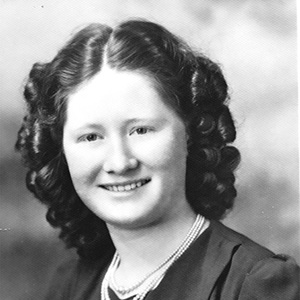 Esther Patkau
Esther Patkau
In the 1950s, Mennonite churches in Canada had the practice of ordaining missionaries. What church leaders could not imagine at home seemed acceptable for women who would be sent far away. Esther Patkau, ordained as a missionary in 1951, returned to Canada as a seasoned pastor from Japan. In 1976, she began serving as associate pastor at First Mennonite Church in Saskatoon, where the early years of ministry were challenging, as many congregants were not comfortable having a woman pastor.
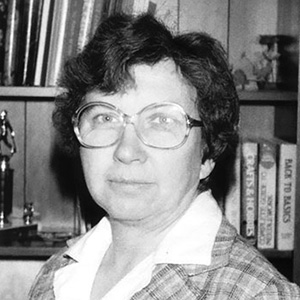 Doris Weber
Doris Weber
Doris Weber grew up in the Western Ontario Mennonite Conference, which had Amish roots. When she was a child in the 1930s and 1940s, her parents took the family to many musical events in churches beyond the Mennonite fold. In one congregation the female pastor of the church introduced the musicians. The next morning, Weber asked her mother if she thought she might be able to be a pastor someday. Her mother did not think so, but Weber never let go of that possibility.
After her sixth child began school, Weber returned to school to receive her Bachelor of Arts and Master of Divinity degrees. During these years she began pastoral ministry with her husband, Rod, at Avon Mennonite Church in Stratford, Ontario, in the early 1970s. Rod received the original invitation but insisted that Doris be included in the pastoral call. Her ministry was built on a strong foundation of God’s love and welcoming arms for the people she served. Preaching and pastoral care became opportunities to practice listening and loving. Bringing a woman’s perspective opened a broader way to understand God and to address concerns that specifically impacted women. Co-pastoring with a spouse meant navigating differences in gender, differences in style, and the risk of ministry taking over family time. At times, co-pastoring led to comparisons that created stress in the marriage.
On March 8, 1979, Doris and Rod were both commissioned at Avon Mennonite Church. The conference minister was supportive of women in ministry, and in an era when ordination was downplayed, he thought commissioning would be more acceptable to the congregation. A short time after the commissioning, the commissioning document was replaced by an ordination certificate from the conference.
Doris Weber would go on to pastor numerous congregations on her own.
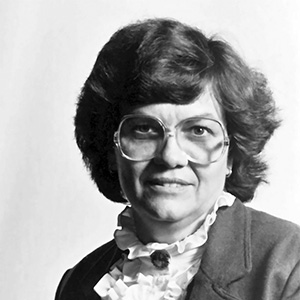 Martha Smith Good
Martha Smith Good
Martha Smith Good studied at Anabaptist Mennonite Biblical Seminary in the early 1970s, when female students were finding their voice as leaders in gatherings outside the classroom. By the time she came to Guelph Mennonite Church in Guelph, Ontario, she had already served in several Mennonite congregations in Canada and the United States. Smith Good was well acquainted with the joy and sacred trust of being a pastor. She had also experienced church structures and male colleagues that assumed male power and leadership. When an all-male elder board expected her to serve the snacks, she gently declined and stated that the one who brought the snacks should serve them.
The struggle for ordination was painful. Initially the conference denied the request of Smith Good’s congregation, without giving clear reasons. Smith Good persisted and asked to meet with the conference personnel committee. The chair, who was the only woman on the committee, abdicated her role and invited Smith Good to lead the meeting. When Smith Good asked for transparency regarding their decision, she was met with silence.
She courageously named that they had not spoken to her directly about an earlier experience of stress in ministry and made assumptions leading to the ordination denial. Since she met the qualifications of the current ordination guidelines, Smith Good let them know she expected to hear from them shortly for an ordination interview and then left.
In April 1982, she became the first woman ordained in the Mennonite Conference of Ontario and Quebec. In joyful worship and celebration with the congregation and her family, she was able to offer forgiveness for what had taken place earlier.
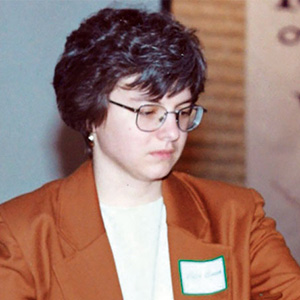 Ruth Boehm
Ruth Boehm
Ruth Boehm began serving in 1989 as youth pastor at Bethel Mennonite Church, Winnipeg, at 25. She was a second-generation woman in ministry, as she had experienced vibrant female pastoral leadership and mentoring in Ontario, where she grew up. She received good support from her male colleagues. She also sensed she had better not “screw up,” since this would reflect on the senior pastor and the risks he was taking with this issue.
Boehm delayed to her second term the ordination process that Bethel had established for its ministers. The ordination committee was assembled and invited the conference into the process. The committee was extremely careful and clear that this was a church issue and not a personal issue, knowing there was some opposition to having a female pastor. Some of those most opposed were women who had experienced significant leadership in informal roles.
The committee recommended to church leadership that Boehm be ordained based on the thorough process of discernment that had taken place rather than a vote. Boehm and a large gathering, including family and many congregations, celebrated her ordination on November 1, 1992.
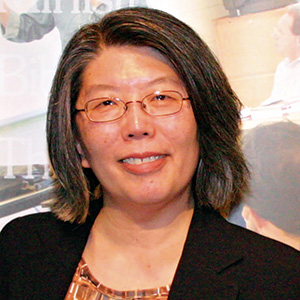 April Yamasaki
April Yamasaki
In 1993, April Yamasaki attended Emmanuel Mennonite Church in Clearbrook, British Columbia, while teaching at the nearby Mennonite Bible college and writing and publishing materials on Christian living. When the pastor left suddenly, Yamasaki was asked to plan and lead four Advent worship services. After the first service, a woman asked, “How would you like to be the pastor of this church?” Yamasaki laughed it off, but she continued to be asked the same question by others, and finally the chair of the search committee called. The congregation had already done some good biblical study on the role of women in the church, and so they were ready to consider calling a woman.
God took Yamasaki from no thoughts about pastoral ministry to reluctantly meeting with the search committee to curiosity and finally to excitement. The initial call was for an interim period, but within that first year she was invited to become the lead pastor. The conference was ready to move forward with ordination. Yamasaki, however, was still getting used to the idea of being a pastor. She was aware that the wider church was adopting a two-year licensing process and suggested they follow that path. With ordination, she was saying, “I’ve tested it, I’ve explored it, and I understand it now as an ongoing ministry for me.”
On October 27, 1996, she was the first woman ordained to pastoral ministry in the Conference of Mennonites in British Columbia.
Magdalena Widjaja
Grace Mennonite Church in Regina, Saskatchewan, established Chinese and Laotian fellowships in 1988 within the congregation as a result of sponsoring refugees. Magdalena Widjaja, an Alliance-trained pastor, became the second pastor of the congregation’s Chinese fellowship. She came from a large evangelical Indonesian congregation with understandings of the pastor being in charge. She had many adjustments to becoming a Mennonite pastor in the Canadian context. The fellowship was small, and the majority of attenders were Chinese university exchange students navigating a new culture, who would leave after four years of study.
Accepting that decisions were shared with congregational leaders was new to Widjaja, but she learned to appreciate this support and accountability during challenging times of ministry. She was ordained in 1997.
Conclusion
Though there were few Mennonite women in pastorates in the 1970s, by 1985 there were 12 women serving across the conferences that would eventually form Mennonite Church Canada. By 1990, there were 20 women, and by 2000 the number had doubled to 40. By 2006, there were 72 women on the ministerial registry list.
This article is adapted from the chapter, “The great hurdle: Women are ordained,” in Proclaiming the Good News: Mennonite Women’s Voices, 1972–2006, edited by Lois Y. Barrett and Dorothy Nickel Friesen (Institute of Mennonite Studies, 2023). Reprinted with permission.



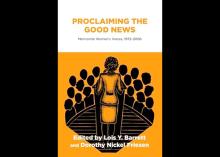
Add new comment
Canadian Mennonite invites comments and encourages constructive discussion about our content. Actual full names (first and last) are required. Comments are moderated and may be edited. They will not appear online until approved and will be posted during business hours. Some comments may be reproduced in print.